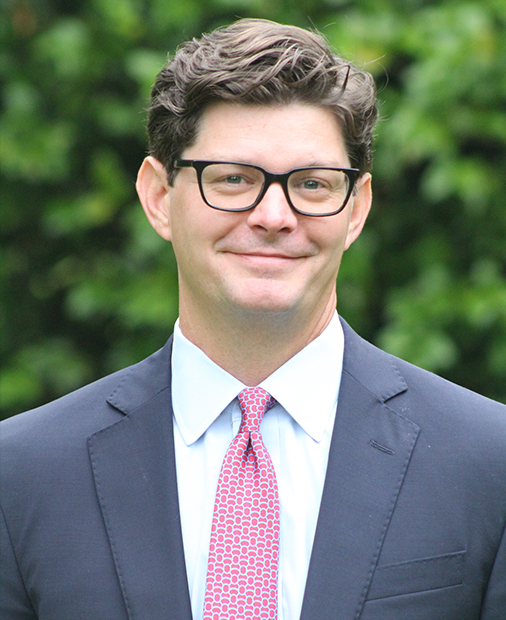Online Trademark Attorneys
Trademark Attorney Working With Clients in Denver, CO
If you're an entrepreneur, you know that protecting your intellectual property should be high on your list when it comes to safeguarding your company. However, as a successful business owner, you also know the steps and costs of filing a trademark in the U.S. can be expensive and arduous.
This conundrum can be even more overwhelming for new business owners who want to do everything possible to minimize the price of securing trademarks. They try to handle complicated tasks like trademark registration on their own, which can be a big mistake - especially when juggling the day-to-day tasks of running a business. You may be thinking, "But what about those set-it-and-forget-it services you can find online? All you have to do is plug in your info, and you're done." Using pre-made templates for trademark filing can be tempting, but doing so can leave you with inadequate protection and hurt you in the long run.
So, what is the easiest, most cost-effective route to consider that also minimizes legal risk? The truth is, before you spend money on an online filing service, it's best to consult with a trademark attorney working with clients in Denver, CO.
At Sausser Summers, PC, our experienced trademark attorneys can help you understand the trademark process step by step. We can even help with U.S. trademark filing, U.S. trademark responses, and U.S. trademark renewals at a price you can actually afford. That way, you can make an informed decision regarding your business without having to break the bank.
Resources
Sausser Summers, PC: Simplifying the U.S. Trademark Process
Hiring an attorney can be a daunting task, but at Sausser Summers, PC, our goal is to make the process as simple and seamless as possible for you. That's why we offer a straightforward checkout service. First, you choose your flat fee trademark service and fill out a short questionnaire. Then, we will contact you within 24 hours to discuss the details of our service. From there, one of our experienced trademark attorneys will get to work on your behalf.
Using a trademark attorney for filing in Denver, CO, can significantly increase your chances of a successful registration. The U.S. government recommends hiring a trademark attorney to help with your application, and our team of trademark lawyers is dedicated to meeting your needs. In fact, we help ensure your application is filed correctly the first time so you can get on with your life and avoid legal risks.
At Sausser Summers, PC, we work closely with our clients to understand their needs and provide them with sound professional advice. We never offer incomplete services, such as simply filing for registration, because that would leave you open to legal risks. You can rely on us to handle your intellectual property matters, and our flat fee services can help protect your business in a simple, straightforward, and affordable way. It's really that simple.
In terms of filing a U.S. trademark, we provide an easy three-step process to protect your intellectual property:
1. You provide your trademark info to our team via an online form.
2. Our team performs a comprehensive trademark search. This search ensures that no other marks will prevent you from registering your trademark in the U.S. Once performed, we'll send you a legal opinion letter that details our findings.
3. Sausser Summers, PC, files your U.S. trademark application. We are then listed as your Attorney of Record on file. From there, we'll provide ongoing updates regarding the status of your trademark as it works through the registration process.
The bottom line? At Sausser Summers, PC, we give both new and seasoned business owners an easy, efficient, cost-effective way to protect the one asset that sets them apart from others: their name.

The bottom line?
At Sausser Summers, PC, we give both new and seasoned business owners an easy, efficient, cost-effective way to protect the one asset that sets them apart from others: their name.
Do I Really Need a Trademark Attorney for Protecting My Business in Denver, CO?
It's not necessary to be a lawyer in order to apply for a trademark. Anyone can submit a trademark application to the U.S. Patent and Trademark Office (USPTO). However, registering a trademark involves more than just filling out a form. It's essential to conduct thorough research, accurately identify and clearly explain your trademark to ensure it receives adequate protection. And even after securing a trademark, you've got to monitor it consistently to make sure it's free from infringement.
The big takeaway here is that it's always a good idea to work with a trademark attorney to protect the intellectual property that you've worked so hard to establish. According to the Wall Street Journal, applicants are approximately 50% more likely to secure their trademark than people who file applications on their own. If your trademark application is rejected by the USPTO, you will need to revise and refile it, incurring additional filing fees. To avoid delays and extra costs, it is best to have a trademark lawyer help you get it right the first time.
Additional Benefits of Using a Trademark Attorney
Great trademark attorneys (like those you'll find at Sausser Summers, PC) will help with every step of filing and enforcing your trademark. Some additional benefits include the following:
Check to see if your proposed trademark is registered by another entity.
Conduct research to see if another business is using the trademark for which you're applying.
Provide advice and guidance on the strength of your trademark.
Draft and submit your trademark applications and application revisions.
Advice and guidance regarding trademark maintenance and protection.
Monitor the market for unauthorized use of your trademark.
Trademark enforcement to protect you against infringement.

Curious whether our trademark attorney services are right for you and your business? Contact Sausser Summer, PC, today. Let's talk about what you need, and how we can help.
What About Online Filing Services?
Online services, can provide you with basic assistance in filing your trademark. However, they will never be a legitimate substitute for an experienced trademark attorney helping clients in Denver, CO.

Although online filing services offer a step-by-step process, they take a one-size-fits-all approach to preparing legal documents. Even their advanced service only provides basic attorney assistance in completing your paperwork and helping with minor roadblocks. Online filing services' disclaimer highlights the many limitations of its services, including the fact that communications are not protected by attorney-client privilege. In addition, online filing services cannot provide advice, explanations, opinions, recommendations, or any kind of legal guidance on possible legal rights, remedies, defenses, options, selection of forms or strategies.
In other words, online filing services can offer you the necessary forms and point you in the right direction, but they cannot customize their services to your specific needs or help you with serious complications that may arise.
For the most comprehensive trademark service and protection, it's always wise to work with highly rated trademark lawyers, like you'll find at Sausser Summers, PC.
Understanding Trademarks Over Time
Trademarks in the U.S. can last indefinitely, but did you know that clients in Denver, CO can file a trademark online, only to lose protection in some circumstances? Trademarks differ from patents and copyrights in that they do not have an expiration date. However, to prevent the cancellation of a trademark, you must maintain it. To ensure that your trademark remains protected, you must actively use it in commerce and renew it with the USPTO every ten years.
The Lanham Act tells us that "use in commerce" is the legitimate use of a trademark in the ordinary course of trade. In other words, you cannot register a trademark solely to reserve the rights to it in the future. In most cases, a trademark must be used continuously in connection with the goods or services it is registered for.

Steps to Renew Your Trademark
Trademarks are registered with the USPTO and generally need to be renewed every ten years. However, there is one crucial exception that you should be aware of. Within the first ten years of owning a trademark, you must file for renewal between the fifth and sixth year from the date of your initial registration.
During this renewal period, you are required to submit a Section 8 declaration, a specimen that shows how the mark is being used, and pay the required fee. You can also apply for Section 15 Incontestability status, which can strengthen your trademark rights. This application, although not mandatory, can make it harder for others to challenge your ownership of the mark.
After the first renewal, which falls between the fifth and sixth year of ownership, the next renewal filing is due between the ninth and tenth year, and then every tenth year thereafter. In the ninth year you will need to file a Section 8 declaration, attesting to your use of the mark or excusable nonuse. You've also got to file a Section 9 renewal application before the end of the tenth year to keep your registration active.
It is worth noting that the USPTO provides a six-month grace period if you fail to renew your mark within the required time frame, but it is best not to rely on it. If you don't file within the grace period time limits, the USPTO will cancel and expire your mark.
By hiring trademark attorneys helping clients in Denver, CO, you can avoid the pitfalls and mistakes that can arise and cause you to lose your rights to the mark that represents it.
Losing Your Trademark Rights Through Abandonment
In the event that you stop using your trademark and have no plans to resume using it in commerce, it may be considered abandoned by the USPTO. This could result in the loss of your protective rights to the mark. Typically, a trademark is assumed to be abandoned if it has not been used for three years. However, you may be able to refute this presumption by providing evidence that you intend to use the mark again in the future.
Losing Your Trademark Rights Through Inappropriate Licensing
In addition to trademark abandonment, you should also be wary of improper licensing. It's important to remember that once you allow someone else to use your trademark, you must keep an eye on how they use it. You should monitor the products or services that feature your trademark to ensure that they meet consumers' expectations in terms of quality. Failure to do so can lead to a "naked" trademark license and the loss of your protective trademark rights.
How to Avoid Having to Refile Your Trademark
If you're wondering how you can avoid refiling your trademark, the answer is simple: file it correctly the first time around. Filing a trademark isn't inherently difficult, but when doing so, it's very important that certain aspects are filled out accurately in your application. If any information is missing or incorrect, the trademark application may be considered "void ab initio" or void from the beginning, requiring you to file again.
To avoid this, make sure that the information you provide in the application is accurate and complete, including the ownership of the trademark. For instance, if a corporation has multiple shareholders, it should not file under the President's personal name. The rightful owner should be the one/entity that ultimately controls the trademark and the associated goods/services.
It is also important to ensure that the goods and/or services description is precise. For example, if you sell electronic products, you should not file for research and development services despite having a research and development department. The goods/services description should reflect the goods/services you offer to customers, not the departments within your business.
Additionally, providing accurate dates of first use when filing for a trademark is crucial. The USPTO requires two dates to be specified - the date of first use anywhere and the date of first use in interstate commerce. Contact our trademark law office today to learn more about having accurate dates on your filing paperwork.


What Makes an Online Trademark Attorney Great?
At Sausser Summers, PC, we often get questions about how to distinguish run-of-the-mill consultants and others from great trademark attorneys. After all - when you're looking for an attorney to file or prosecute your business trademark, you should know their qualifications. Here are three ways you can separate the proverbial wheat from the chaff when it comes to trademark attorneys.
It's crucial to seek legal advice from a licensed trademark lawyer rather than relying on advice from non-professionals like trademark consultants. The USPTO even recommends hiring an attorney to help with the trademark process. Although trademark consultants may provide advice on trademark availability or name marketability, they cannot file the trademark for you or offer legal advice. According to the Rules of Practicing in trademark cases, "Individuals who are not attorneys are not recognized to practice before the Office in trademark matters." This rule applies to individuals who assist trademark applicants.
When searching for a trademark attorney, it's important to find someone with a strong background in trademark law. Look for an attorney who specializes in this area and has significant experience handling trademark-related cases. Avoid lawyers who don't have expertise in this field, as they may not be able to provide the guidance and support you need.
Ensure your attorney provides updates throughout the trademark registration process to avoid missing deadlines, including responding to any Office actions within six months. Failure to do so can result in trademark abandonment. The USPTO will only correspond with the listed attorney of record, so make sure your attorney keeps you informed.
In summary:
- Be sure you're using a licensed trademark attorney helping clients in Denver, CO.
- It's best to work with a trademark lawyer who has years of experience filing trademarks.
- Ensure that your trademark lawyer is willing to provide ongoing notifications relating to your trademark application process.

Trademark Attorneys Working Hard for You
Building your brand and gaining recognition for it is a significant achievement, and it's important to protect it. However, there are certain pitfalls and mistakes that can arise, causing you to lose your rights to the mark that represents it. By working with knowledgeable trademark attorneys, you can avoid these issues and file your trademark successfully.
With an A+ rating from the Better Business Bureau (BBB), Sausser Summers, PC, offers comprehensive guidance, strategic advice, and reliable representation for a variety of trademark matters. Our attorneys have years of real-world experience and, having registered countless trademarks with the USPTO, provide our clients with individualized representation when they need it most.
If you're looking for skilled, adept, and experienced counsel, look no further than our trademark law firm. Contact us today to schedule your initial consultation and learn how we can help you safeguard your brand.
Latest News in Denver, CO
Consumer Price Index, Denver-Aurora-Lakewood area – March 2024
Bureau of Labor Statisticshttps://www.bls.gov/regions/mountain-plains/news-release/consumerpriceindex_denver.htm
Prices in the Denver-Aurora-Lakewood area, as measured by the Consumer Price Index for All Urban Consumers (CPI-U), advanced 0.7 percent for the two months ending in March 2024, the U.S. Bureau of Labor Statistics reported today. Assistant Commissioner for Regional Operations Michael Hirniak noted that the all items less food and energy index rose by 0.3 percent in February and March. The energy index was up 7.1 percent, and the food index increased 0.6 percent over the past two months. (Data in this report are not seasonally adjusted. Accor...
Prices in the Denver-Aurora-Lakewood area, as measured by the Consumer Price Index for All Urban Consumers (CPI-U), advanced 0.7 percent for the two months ending in March 2024, the U.S. Bureau of Labor Statistics reported today. Assistant Commissioner for Regional Operations Michael Hirniak noted that the all items less food and energy index rose by 0.3 percent in February and March. The energy index was up 7.1 percent, and the food index increased 0.6 percent over the past two months. (Data in this report are not seasonally adjusted. Accordingly, bi-monthly changes may reflect seasonal influences.)
Over the last 12 months, the CPI-U advanced 2.8 percent. The index for all items less food and energy rose 3.4 percent over the year, and food prices rose 2.5 percent. Energy prices fell 5.4 percent, entirely the result of a decrease in the price of gasoline. (See chart 1 and table 1.)
Food
Food prices increased 0.6 percent for the two months ending in March. Prices for food away from home (restaurant, cafeteria, and vending purchases) advanced 2.8 percent, while prices paid for food at home (grocery store prices) fell 1.5 percent for the same period. Within the food at home category, the index for meats, poultry, fish, and eggs (-2.6 percent) led the declines. Decreases in the index were partially offset by a rise in prices for cereals and bakery products (+0.8 percent).
Over the year, food prices advanced 2.5 percent, mainly driven by the index for food away from home, which increased 7.6 percent. Prices for food at home were down 1.3 percent, with the index for meats, poultry, fish, and eggs (-3.3 percent) contributing most to the over-the-year decline.
Energy
The energy index rose 7.1 percent for the two months ending in March. The increase was mainly due to higher prices for gasoline (+14.4 percent), but a rise in the index for electricity also contributed (+3.0 percent). Prices for natural gas service fell over the same period.
From March 2023 to March 2024, energy prices fell 5.4 percent, entirely due to lower prices for gasoline (-20.6 percent). Prices paid for natural gas service rose, and the index for electricity advanced 4.9 percent during the past year.
All items less food and energy
The index for all items less food and energy increased 0.3 percent in the latest two-month period. Higher prices for education and communication (+1.5 percent), recreation (+1.9 percent), and owners’ equivalent rent of residence (+0.2 percent) were partially offset by lower prices for other goods and services (-4.8 percent), medical care (-1.7 percent), and lodging away from home.
Over the year, the index for all items less food and energy rose 3.4 percent. Components contributing to the increase included owners’ equivalent rent of residences (+6.3 percent), rent of primary residence (+4.2 percent), and recreation (+3.4 percent). Partly offsetting the increases were price decreases in public transportation, lodging away from home, and apparel (-4.5 percent).
The May 2024 Consumer Price Index for the Denver-Aurora-Lakewood area is scheduled to be released on Wednesday, June 12, 2024.
Technical Note
The Consumer Price Index (CPI) measures the average change in prices over time in a fixed market basket of goods and services. The Bureau of Labor Statistics publishes CPIs for two population groups: (1) a CPI for All Urban Consumers (CPI-U) which covers approximately 93 percent of the total U.S. population and (2) a CPI for Urban Wage Earners and Clerical Workers (CPI-W) which covers approximately 29 percent of the total U.S. population. The CPI-U includes, in addition to wage earners and clerical workers, groups such as professional, managerial, and technical workers, the self-employed, short-term workers, the unemployed, and retirees and others not in the labor force.
The CPI is based on prices of food, clothing, shelter, and fuels, transportation fares, charges for doctors' and dentists' services, drugs, and the other goods and services that people buy for day-to-day living. Each month, prices are collected in 75 urban areas across the country from about 6,000 housing units and approximately 22,000 retail establishments—department stores, supermarkets, hospitals, filling stations, and other types of stores and service establishments. All taxes directly associated with the purchase and use of items are included in the index.
The index measures price changes from a designated reference date. For most of the CPI-U the reference base is 1982-84 equals 100. An increase of 7 percent from the reference base, for example, is shown as 107.000. Alternatively, that relationship can also be expressed as the price of a base period market basket of goods and services rising from $100 to $107. For further details see the CPI home page on the internet at www.bls.gov/cpi and the CPI section of the BLS Handbook of Methods available on the internet at www.bls.gov/opub/hom/cpi/.
In calculating the index, price changes for the various items in each location are averaged together with weights that represent their importance in the spending of the appropriate population group. Local data are then combined to obtain a U.S. city average. Because the sample size of a local area is smaller, the local area index is subject to substantially more sampling and other measurement error than the national index. In addition, local indexes are not adjusted for seasonal influences. As a result, local area indexes show greater volatility than the national index, although their long-term trends are quite similar. NOTE: Area indexes do not measure differences in the level of prices between cities; they only measure the average change in prices for each area since the base period.
The Denver-Aurora-Lakewood, CO, Core Based Statistical Area is comprised of Adams, Arapahoe, Broomfield, Clear Creek, Denver, Douglas, Elbert, Gilpin, Jefferson, and Park counties in Colorado.
Information in this release will be made available to individuals with sensory impairments upon request. Voice phone: (202) 691-5200; Telecommunications Relay Service: 7-1-1.
3 homes involved in Denver fire
Nate Lynnhttps://www.9news.com/article/news/local/denver-fire-39th-clay/73-9469e4a1-56fc-4bc9-b0b4-15be83f75402
DENVER — Three homes and six other structures were damaged in a fire in Denver Saturday.The Denver Fire Department said firefighters were called to West 39th Avenue and Clay Street just before 11:45 a.m. on a report that two structures were on fire.They called for more firefighters and got the fire under control. Nine buildings were involved, according to th...
DENVER — Three homes and six other structures were damaged in a fire in Denver Saturday.
The Denver Fire Department said firefighters were called to West 39th Avenue and Clay Street just before 11:45 a.m. on a report that two structures were on fire.
They called for more firefighters and got the fire under control. Nine buildings were involved, according to the fire department — three were homes and the other six were sheds or detached garages.
The family living in one of the homes was displaced. The other two houses had damage to the outside.
Denver Fire said they ended up calling in just over a two-alarm response, with a total of 75 firefighters at the scene. One firefighter was evaluated for smoke inhalation and returned to work. No one else was hurt.
A spokesperson for the fire department said neighbors reported hearing a loud explosion before the fire. The cause is under investigation.
https://t.co/wJ2upBZJYQ pic.twitter.com/FjAF9XBWdL
— leanne (@leanneee) April 13, 2024
Update: Fire is under control at this time. 1 firefighter was evaluated for smoke inhalation and returned to work. No civilian injuries. 9 total building were involved, 6 were sheds or detached garages. 1 family has been displaced by this fire… pic.twitter.com/6RCboq4uGc
— Denver Fire Department (@Denver_Fire) April 13, 2024
Related Articles
SUGGESTED VIDEOS: Latest from 9NEWS
MORE WAYS TO GET 9NEWS
Subscribe to our daily 9NEWSLETTER for top stories from 9NEWS curated daily just for you. Get content and information right now for can’t-miss stories, Next and Broncos content, weather and more delivered right to your inbox.
DOWNLOAD THE 9NEWS APP iTunes: http://on9news.tv/itunesGoogle Play: http://on9news.tv/1lWnC5n
HOW TO ADD THE FREE 9NEWS+ APP TO YOUR STREAMING DEVICE
ROKU: add the channel from the ROKU store or by searching for KUSA.
For both Apple TV and Fire TV, search for "9NEWS" to find the free app to add to your account. Another option for Fire TV is to have the app delivered directly to your Fire TV through Amazon.
Denver area clobbered by heavy snow as 50-plus inches falls over Colorado mountains
Steven Yablonskihttps://www.foxweather.com/weather-news/denver-boulder-colorado-west-snowstom-winter-storm-i-25-i-70
DENVER – The spring storm that buried the Denver area in inches to feet of snow finally subsided Friday morning.The snowfall was quite significant, with 5.7 inches officially recorded at Denver International.00:56Watch: Time-lapse of clearing Colorado snow off the driveway"Getting some work do...
DENVER – The spring storm that buried the Denver area in inches to feet of snow finally subsided Friday morning.
The snowfall was quite significant, with 5.7 inches officially recorded at Denver International.
Watch: Time-lapse of clearing Colorado snow off the driveway
"Getting some work done in Highlands Ranch, CO! Concrete snow with a heavy wet base. A couple of snowball fights then off to hit the ibuprofen bottle and some hot chocolate," posted Chris Scovil. All that work took him over an hour and a half and the snow is still falling.
However, that does not capture the scope of the event. As much as 9-10 inches of snow fell downtown, 1-2 feet fell in the eastern suburbs and more than 4 feet fell in the mountains. Nederland reported 53 inches as of Friday morning.
Flights canceled, highways closed due to snow
The Colorado Department of Transportation closed a 50-plus-mile stretch of Interstate 70 in both directions between the western side of the Denver metro and Silverthorne, Colorado, on Tuesday due to safety concerns from the winter weather. Most of the interstate had reopened Friday, though commercial vehicles were also prohibited driving from Vail to Morrison through at least noon.
"We're having trouble with commercial motor vehicles," Matthew Inzeo of the Colorado DOT told FOX Weather Thursday. "Those 18-wheelers who aren't following the law are trying to sneak through and not put chains on their tires, and that's not doing too well when you've got conditions this extreme."
I-25 was no better on Thursday. The Colorado State Patrol posted on social media, "Don’t be fooled! It’s icy and snow-packed. Ramps and side streets are even worse!"
Inzeo said the DOT's 1,600 crews were working around the clock on 12-and-a-half-hour shifts until the storm moved out, and every lane was clear. The state has a total of 875 plows, of which 100 are dedicated to Denver and another 40 handling the "ski corridor" which is from Denver to the Continental Divide past ski resorts.
Colorado Springs officials warned that residential streets might not be plowed until Saturday.
Additionally, more than 800 flight cancelations, almost half of all inbound and outbound flights, were reported at Denver International Airport as of Thursday morning, according to FlightAware.
But airport operations were closer to normal on Friday.
Ahead of the storm, Denver Public School officials announced all schools and administrative offices would be closed on Thursday and Friday due to weather. The U.S. Air Force Academy north of Colorado Springs also announced it would be closed on Thursday and canceled all classes.
DOWNLOAD THE FREE FOX WEATHER APP
The weight of the heavy, wet snow brought down trees and large branches that fell onto power lines, leading to scattered power outages.
Utility companies were working hard to keep up with the outages.
"And they just keep falling," posted West Metro Fire about the power lines blocking streets.
This powerful winter storm comes three years to the day Denver saw its last high-impact snowstorm, when the Mile High City saw well over 2 feet of snow during the storm on March 14, 2021.
Lingering snow showers to cause issues
While the snow is mostly done in Denver, a potent upper-level low will continue to spin above the region Friday, bringing snow to the mountains of the Four Corners states, the FOX Forecast Center said.
Travel along I-40 in Arizona and New Mexico will become hazardous in spots into Saturday as pockets of heavy snow develop.
The upper-level low, cut off from the jet stream, will have nothing to move it along. As a result, it'll continue to spin over the region right into next week. Low-elevation rain showers and high-elevation snow will be present every day, the FOX Forecast Center said.
A lack of moisture will keep the showers light, so snow amounts should be manageable, and no flooding is expected. Still, more than a foot of snow is likely across the region's highest peaks.
Colorado ice cream shop opening 9th storefront location
KUSA.comhttps://www.9news.com/article/life/style/colorado-guide/little-man-ice-cream-greenwood-village-colorado/73-71b2ba13-272e-4605-a52f-8a908d0efc07
The new ice cream shop has a series of functional Willy Wonka-esque candy topping tubes snaking throughout the scoop space.Credit: Little Man Ice CreamGREENWOOD VILLAGE, Colo. — The newest ice cream shop in the Denver metro area opens Friday.Little Man Ice Cream opened a location in Greenwood Village at ...
The new ice cream shop has a series of functional Willy Wonka-esque candy topping tubes snaking throughout the scoop space.
Credit: Little Man Ice Cream
GREENWOOD VILLAGE, Colo. — The newest ice cream shop in the Denver metro area opens Friday.
Little Man Ice Cream opened a location in Greenwood Village at 4940 S. Yosemite St., next to Cherry Creek High School.
The 1,500-square-foot shop will have a grand opening ceremony at 6:30 p.m. Friday featuring the Cherry Creek High School Marching Band. The performance will be followed by a ribbon-cutting at 7 p.m.
Owners of "The Villager" community newspaper Bob & Gerri Sweeney will help cut the ribbon alongside climate scientist Dr. Warren Washington.
Little Man Ice Cream said its newest location will feature 24 daily flavors, as well as seasonal flavors, and vegan and sorbet options. The shop has a series of functional Willy Wonka-esque candy topping tubes snaking throughout the location.
“We pride ourselves on creating memorable ice cream experiences, not just for special occasions, but to celebrate everyday victories,” said Little Man Ice Cream founder Paul Tamburello. “We’ve truly succeeded as an organization if we can make a customer’s day just a little bit brighter after visiting one of our shops.”
Little Man has a 10th store opening in downtown Littleton on Main Street in July.
The Little Man Ice Cream Co. was founded in 2008 with the launch of Little Man Ice Cream — a 28-foot tall milk can-shaped shop in Denver’s Lower Highland neighborhood.
Little Man Ice Cream Company locations
RELATED: Denver scoop shop reopening as Little Man Ice Cream
RELATED: Pizza chain with 300 locations is coming to Colorado for the first time
Credit: Little Man Ice Cream
SUGGESTED VIDEOS: Colorado Guide
Watch more from 9NEWS on the free 9NEWS+ app for Roku and Fire TV.
9NEWS+ has multiple live daily shows including 9NEWS Mornings, Next with Kyle Clark and 9NEWS+ Daily, an original streaming program. 9NEWS+ is where you can watch live breaking news, weather updates, and press conferences. You can also replay recent newscasts and find videos on demand of our top stories, local politics, investigations and Colorado specific features.
Disclaimer:

 Sausser Summers, PC
Sausser Summers, PC Call
us (843) 654-0078
Call
us (843) 654-0078